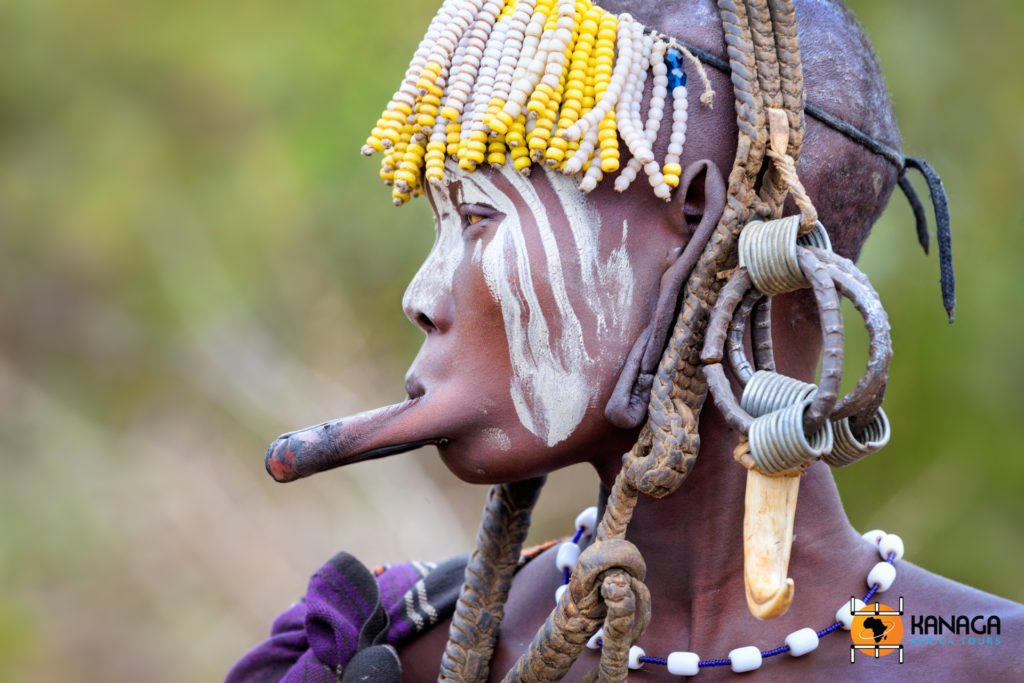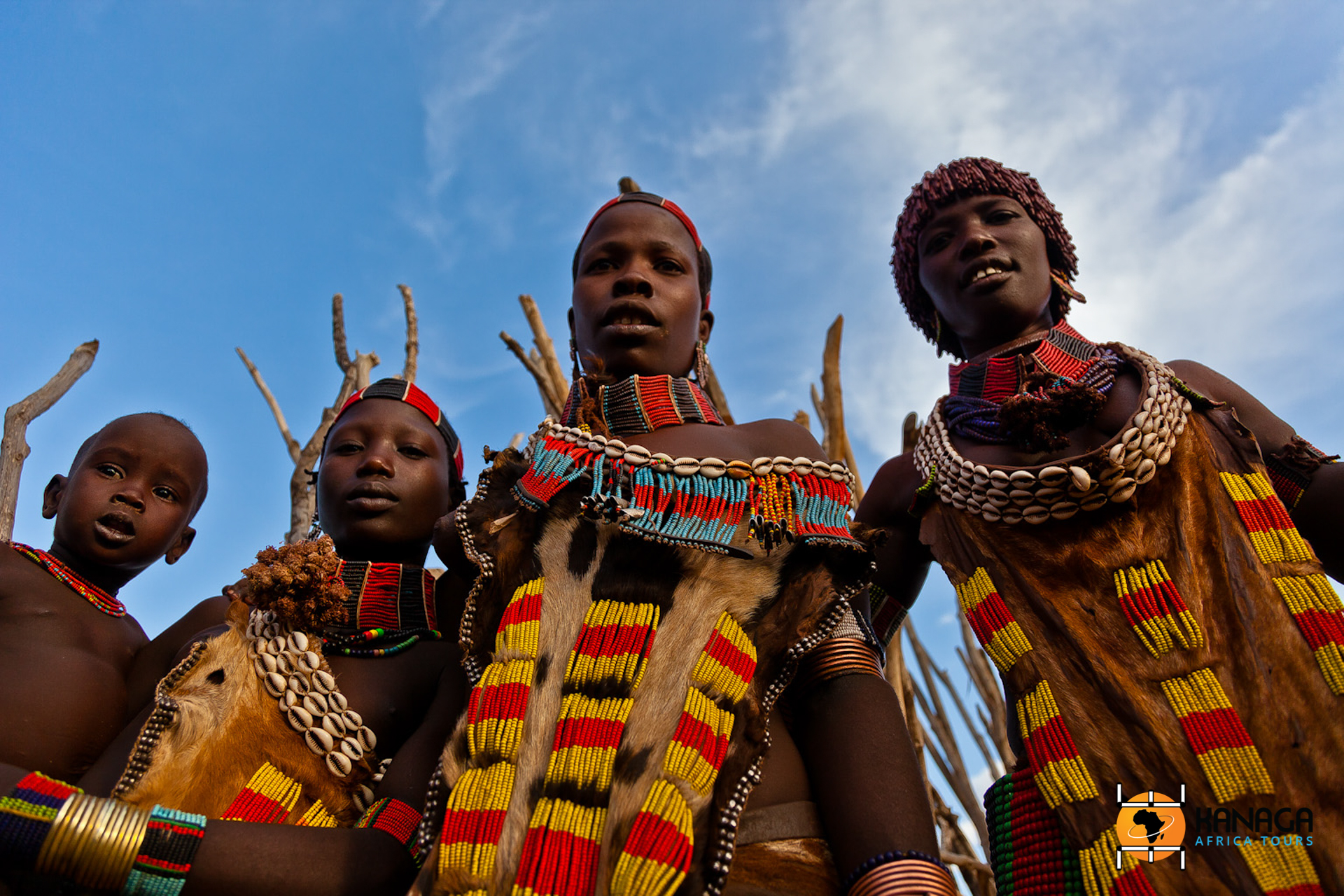© A. Pappone
The south-western region of Ethiopia is the most ancestral region of the country.
Here a great variety of landscapes crosses lakes inhabited by crocodiles, national parks and expanses of cotton fields, riverine forests and barren savannahs. These are the lands bordering the Omo River, the great river that flows into Lake Turkana. This is the region inhabited by the peoples and tribes of the Omo Valley, a mosaic of peoples whose traditions have remained intact and whose tribal culture has not been ousted by revealed religions. Here, the social order revolves around ancestral animist beliefs, initiation rites and propitiatory dances.
The main town is Arba Minch, the base from which expeditions to traditional villages depart. Before entering the lower Omo Valley, a particularly pleasant stop northwest of Arba Minch is the Guge Mountains, home to the Dorze tribe with their characteristic huts. These huts are up to 12 metres high and their unique structure of long wooden poles, bamboo walls and enset (false banana) leaf roofs means that there is no need for a central support pole. Both the family and the cattle live inside them. The Dorze are a people of farmers and skilled cotton weavers, who have devised a special terracing technique to stop erosion of the steep soils. Guided tours, traditional dances and spinning and weaving demonstrations are organised in the villages, and it is possible to spend the night in characteristic huts that have been adapted with every comfort. This is one of the few examples where local organisations have succeeded in positively developing the impact of tourism on the local population.
Another mountain tribe is the Konso, characterised by their fortified defence architecture and ancestor worship, the typical expression of which are the wagas, wooden sculptures representing deceased warriors, their vanquished enemies and captured animals.
The peoples who inhabit the valley represent a veritable mosaic of peoples in a relatively small area. A concentration of tribes, each with their own characteristics and traditions.
Within the Mago National Park lives one of the most visited tribes in the Omo Valley, the Mursi. This tribe embodies the essence of tribal culture, with its bodily scarifications and the famous lip plates that deform women’s lips. But this is precisely why the Mursi found themselves the most targeted by photographs, until they turned it into a real business, transforming what was originally intended to be a magical experience of encounters between different civilisations into a kind of “human safari” to be paid for with dollars.
Another ethnic group that uses female labial discs and practices male stick fighting, common to the Mursi, are the Surma. While the masters of body painting are the Karo, who during traditional dances and ceremonies paint their skin with chalk, imitating the feathers of the guinea fowl.
The village of Turmi is the main centre of the Hamer tribe, who come here from the surrounding area every Monday, market day, and especially during the famous Leap over the Cattle initiation ceremony. This ceremony, common to young Hamer and Banna boys, is the test they must undergo to enter adulthood. It consists of arranging up to 30 bulls in a row, on which the young men, all naked, must jump from one rump to the other without falling, after being whipped if they fail. On either side of the bulls, the young girls scream and are whipped as a sign of devotion and love.
The peculiar hairstyles of the Hamer are considered the most beautiful and refined among the peoples of the Omo Valley. Women cover their hair with a mixture of ochre, resin and water until the braids take on a beautiful copper colour. While the men, victorious over an enemy or a fierce beast, knead their locks in clay and ostrich feathers and sleep on special headrests so as not to ruin their hairstyle. The Hamer are also famous for their ornaments and jewellery. Earrings indicate the number of wives one has, while women use bracelets, beaded necklaces and ciprea shells. Narrow iron necklaces are reserved only for married or betrothed women.
One of the attractions of the Omo Valley villages, apart from the multitude of tribes that inhabit it, are the numerous weekly markets that animate the main centres. From Dorze to Chencha, from Konso to Jinka, from Arbore to Turmi, Omorate, Dimeka and Key Afar, each village hosts one or more weekly markets, the ideal concentration of local products, traditional handicrafts, peoples and cultures from all over the Valley.







